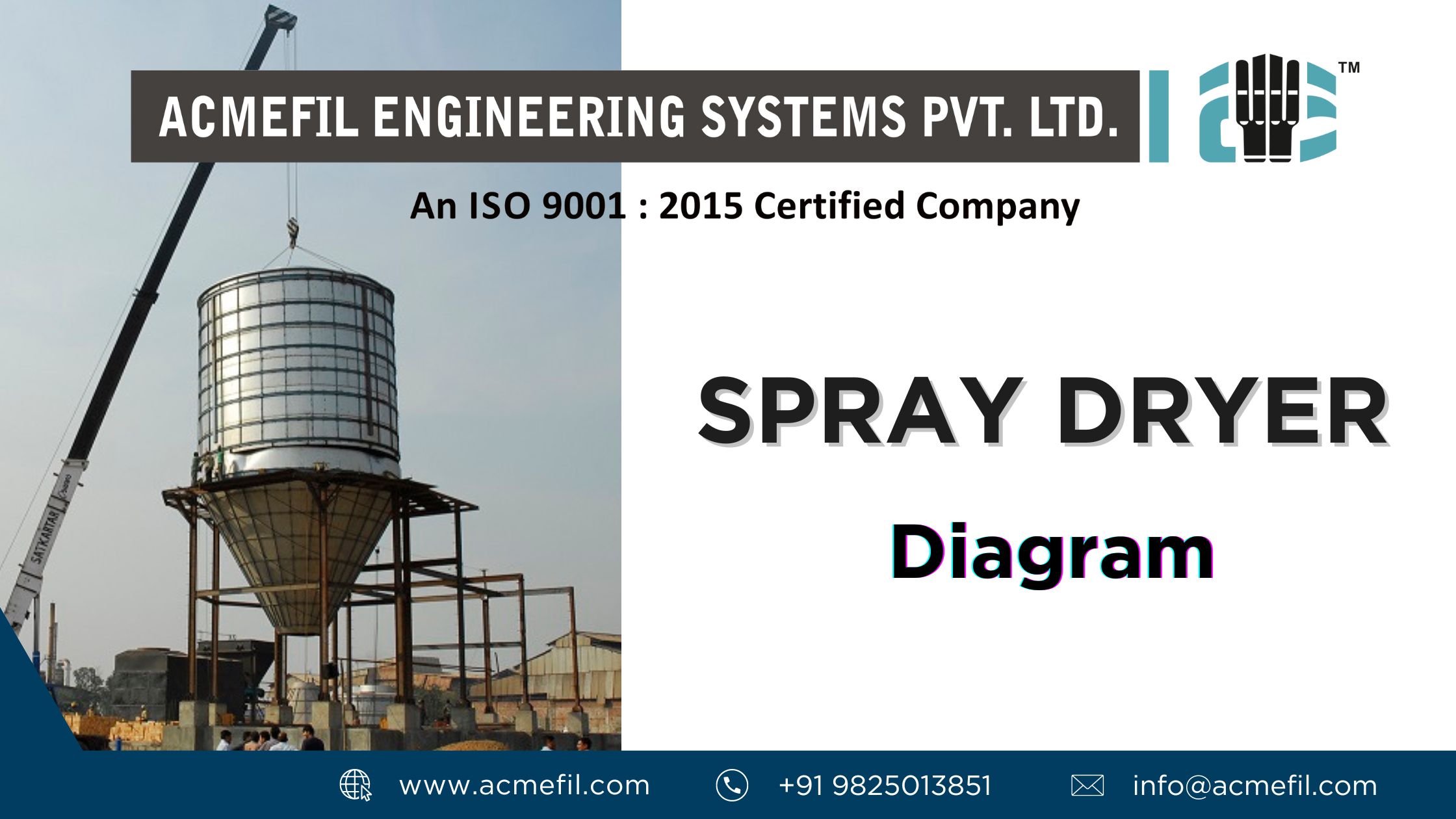Spray dryers play a crucial role in various industries, ranging from food processing to pharmaceuticals. This versatile equipment transforms liquid solutions into dry powders, making it indispensable for many manufacturing processes. In this blog post, you will delve into the intricacies of the spray dryer diagram, gaining a detailed understanding of each component and its function.
Spray drying produces dry powder from liquid by rapidly drying it with hot gas. This process suits heat-sensitive materials, making it widely used in the food, pharmaceutical, and chemical industries. By understanding the spray dryer diagram, you can optimize the process and ensure the quality of the final product.
Spray Dryer Diagram
- Feed Pump The feed pump initiates the spray drying process by transferring the liquid feed from a holding tank into the spray dryer. It handles the viscosity and flow rate of the feed material effectively.
- Atomizer The atomizer converts the liquid feed into fine droplets. Various types of atomizers exist, including rotary, nozzle, and ultrasonic atomizers. Each type offers advantages depending on the application and properties of the feed material.
- Drying Chamber In the drying chamber, the actual drying occurs. Hot air enters the chamber, and the atomized feed sprays into this hot air. The heat causes the moisture in the droplets to evaporate, leaving behind fine dry particles. The drying chamber’s design and size vary based on specific process requirements.
- Air Heater The air heater raises the air to the required temperature before it enters the drying chamber. Precise temperature control ensures efficient drying without degrading the product.
- Cyclone Separator After drying, the air and dried particles move to the cyclone separator. This component separates the dry particles from the air. The centrifugal force in the cyclone forces the particles to the walls, where they are collected and discharged.
- Bag Filter The bag filter captures any fine particles that escape the cyclone separator, ensuring the exhaust air is clean and meets environmental standards.
- Exhaust Fan The exhaust fan removes moist air from the drying chamber, maintaining the necessary airflow and pressure within the spray dryer for continuous operation.
- Control Panel The control panel acts as the brain of the spray dryer, allowing operators to monitor and adjust parameters like temperature, airflow, and feed rate. Advanced control panels may include automated systems for process optimization.
Spray Drying Process about Spray Dryer Diagram
The spray drying process starts with the feed pump transferring the liquid feed into the atomizer. The atomizer then sprays the feed into the drying chamber as fine droplets. Simultaneously, hot air enters the drying chamber, causing the moisture in the droplets to evaporate quickly. The dry particles formed are then separated from the air in the cyclone separator and collected. Any remaining fine particles are captured by the bag filter, and the clean exhaust air is released by the exhaust fan.
Applications of Spray Drying
Spray drying finds applications across various industries:
- Food Industry: Producing powdered milk, coffee, and spices.
- Pharmaceutical Industry: Manufacturing antibiotics, enzymes, and other medications.
- Chemical Industry: Creating catalysts, detergents, and polymers.
Conclusion
You can optimize the spray dryer process by understanding the spray dryer diagram. Each component plays a vital role in efficiently transforming liquid feeds into dry powders. Mastering the spray dryer diagram can enhance your production capabilities and product quality, whether you operate in the food, pharmaceutical, or chemical industry.
By grasping the function of each component and the overall process, you ensure that your spray drying operations run smoothly and produce high-quality products consistently.
Acmefil Engineering Systems Pvt Ltd stands as the leading name in the spray dryer industry, renowned for its exceptional product quality and unparalleled after-sales services. With a commitment to innovation and excellence, Acmefil Engineering consistently delivers state-of-the-art spray drying solutions tailored to meet the diverse needs of its clients. Our dedicated after-sales support ensures that every system operates at peak performance, providing customers with reliable and efficient service long after the initial purchase. Trust Acmefil Engineering for cutting-edge technology and unwavering customer support, making them the preferred choice in the spray dryer industry.


